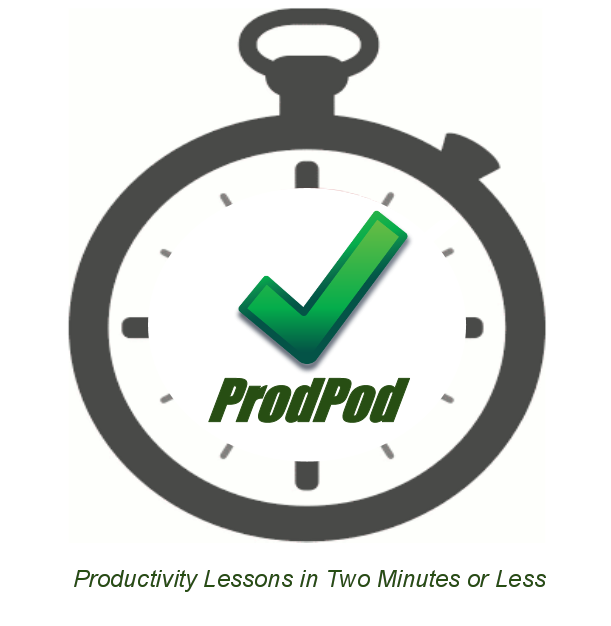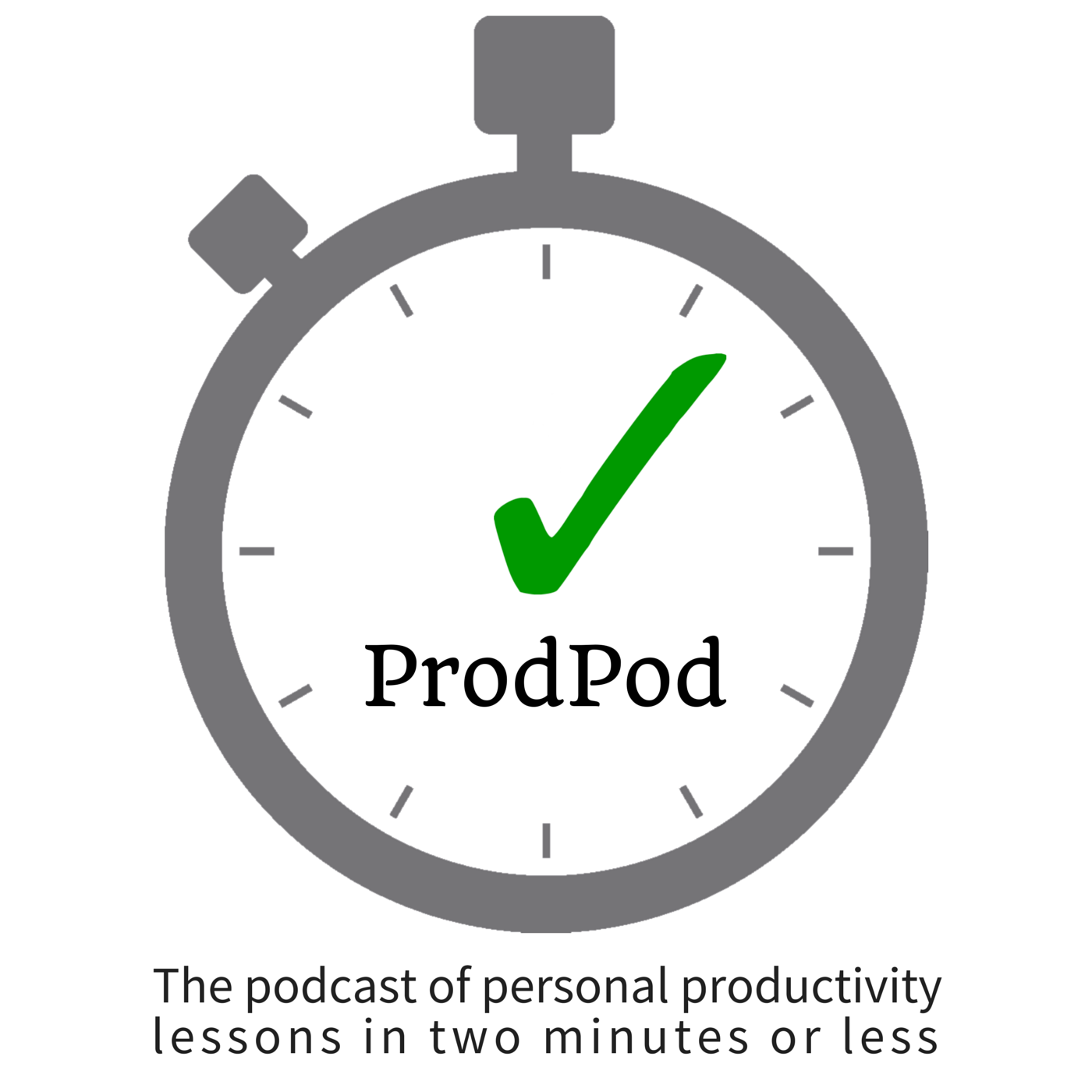Episodes

Wednesday Nov 27, 2013
ProdPod: Episode 76 -- Be Thankful, and Be Productive
Wednesday Nov 27, 2013
Wednesday Nov 27, 2013
“When you are grateful, fear disappears and abundance appears.” ~Anthony Robbins
Tony Robbins should know a thing about being thankful. When he speaks to audiences, he tells frequently of his humble beginnings, the gratitude he had in those who helped him survive then thrive, and the self-beneficial results of his giving back to his community and others. During this Thanksgiving holiday week, now's the time to think about how your productivity is enhanced by being grateful.
Don't believe me? Dr. Robert Emmons, psychology researcher, at UC Davis, has studied gratitude and well-being, and it shows that productivity toward goals increases with exhibiting more gratitude in your life. As the studies summary of findings states on the research department's website [ http://psychology.ucdavis.edu/Labs/emmons/PWT/index.cfm?Section=4 ], those "who kept gratitude lists were more likely to have made progress toward important personal goals." And, "daily gratitude intervention (self-guided exercises) ... resulted in higher reported levels of the positive states of alertness, enthusiasm, determination, attentiveness and energy."
So, how might you use gratitude practically in your own productive life?
Lisa Peake on her blog at PeakeProductivity.com offers a great suggestion: "write down a few things you are grateful for each evening. Start with this evening and see where it goes from there. You may be surprised at how much you have to be thankful for."
Jason Womack, author of Your Best Just Got Better [ http://amzn.to/1crZDmn ], has a practice of mailing a daily thank-you card…this brings tangible rewards in responses of offers to collaborate, keeping you top of the mind with your audience, and the brain's release of dopamine (those are the good brain chemicals that make you feel great) that you get from making someone's day brighter. While I opt to sending out thank-you emails more often than printed cards to mail, the technique is still quite powerful for me.
And, with all this talk of gratitude let me take this time to say, thank you for listening to ProdPod! I am grateful everyday for the thousands of listeners a month who encourage me with compliments and stories of how ProdPod's advice has helped them, recommend new topics, and suggest improvements to the podcast. You all help me make this possible.
I hope you've enjoyed this ProdPod episode, Happy Thanksgiving and here's to your productivity success…in two minutes or less!

Tuesday Nov 19, 2013
ProdPod: Episode 75 — How to Run your Personal Advisory Board, Part Two
Tuesday Nov 19, 2013
Tuesday Nov 19, 2013
Steps for Setting Up Your Personal Advisory Board:
SWOT Analysis.
2. Set clear, written goals and objectives for your PAB: Vision and 6-month mission
statements.
3. Make a list of potential board advisers. Be broad in your list; think of all your
relationship categories (academic, personal, professional, extracurricular and more)
and make note of individuals you believe have skills that complete weaknesses or
provide connections to opportunities from your SWOT analyses. This is an ongoing list
and should be continually updated and reviewed for potential board advisers at least
semi-annually.
4. From your list of potential board advisers, select six individuals. You should decide
on the group that (a) best fits your needs for the coming six months that you've
planned through your mission statement, (b) has the best chance of collaborating
well, and (c) have no apparent reasons for not being able to serve on the board for
the next set of terms.
5. Create a list of possible substitutes (usually up to three), in case some of your
potential board advisers are unable or unwilling to be a part of your PAB. Be
gracious, positive and compassionate with anyone who does not or cannot be on your
PAB. Be sure to ask them if they'd like to be considered for future PABs; that way, if
they say “no,” you can remove them completely from your list of potential board
advisers so you don't bother them again in the future.
6. Reach out to each potential board adviser, introduce them to the concept of the PAB
and yours and their responsibilities (see the outline below), and ask them if they'd be
interested in joining the PAB.
7. Once you have six yeses, you are ready to schedule your first PAB meeting.

Tuesday Nov 12, 2013
ProdPod: Episode 74 -- How to Run your Personal Advisory Board, Part One
Tuesday Nov 12, 2013
Tuesday Nov 12, 2013
Try to schedule the meetings and circulate the agenda with any preparatory materials to be reviewed as soon as practicable to your TAs. Remember, they have personal and professional lives in addition to your PAB, so make it as easy for them as possible to help you. You can try a tool like Doodle.com to schedule your meetings.

Tuesday Nov 05, 2013
Tuesday Nov 05, 2013
colleagues. A PAB offers you:
• An unbiased outside perspective.
• Increased accountability and discipline.
• Enhanced self-management effectiveness.
• Help in avoiding costly mistakes.
• Rounding out skills and expertise lacking in your skill-set and experience.
• A sounding board for evaluating new professional and business ideas and opportunities.
• Enhanced community and public relations.
• Strategic planning assistance and input.
• Brings together centers of influence for networking introductions.

Tuesday Oct 29, 2013
ProdPod: Episode 72 -- Establishing a Personal Advisory Board
Tuesday Oct 29, 2013
Tuesday Oct 29, 2013
Independent thinking alone is not suited to interdependent reality. Independent people who do not have the maturity to think and act interdependently may be good individual producers, but they won't be good leaders or team players. They're not coming from the paradigm of interdependence necessary to succeed in marriage, family, or organizational reality.

